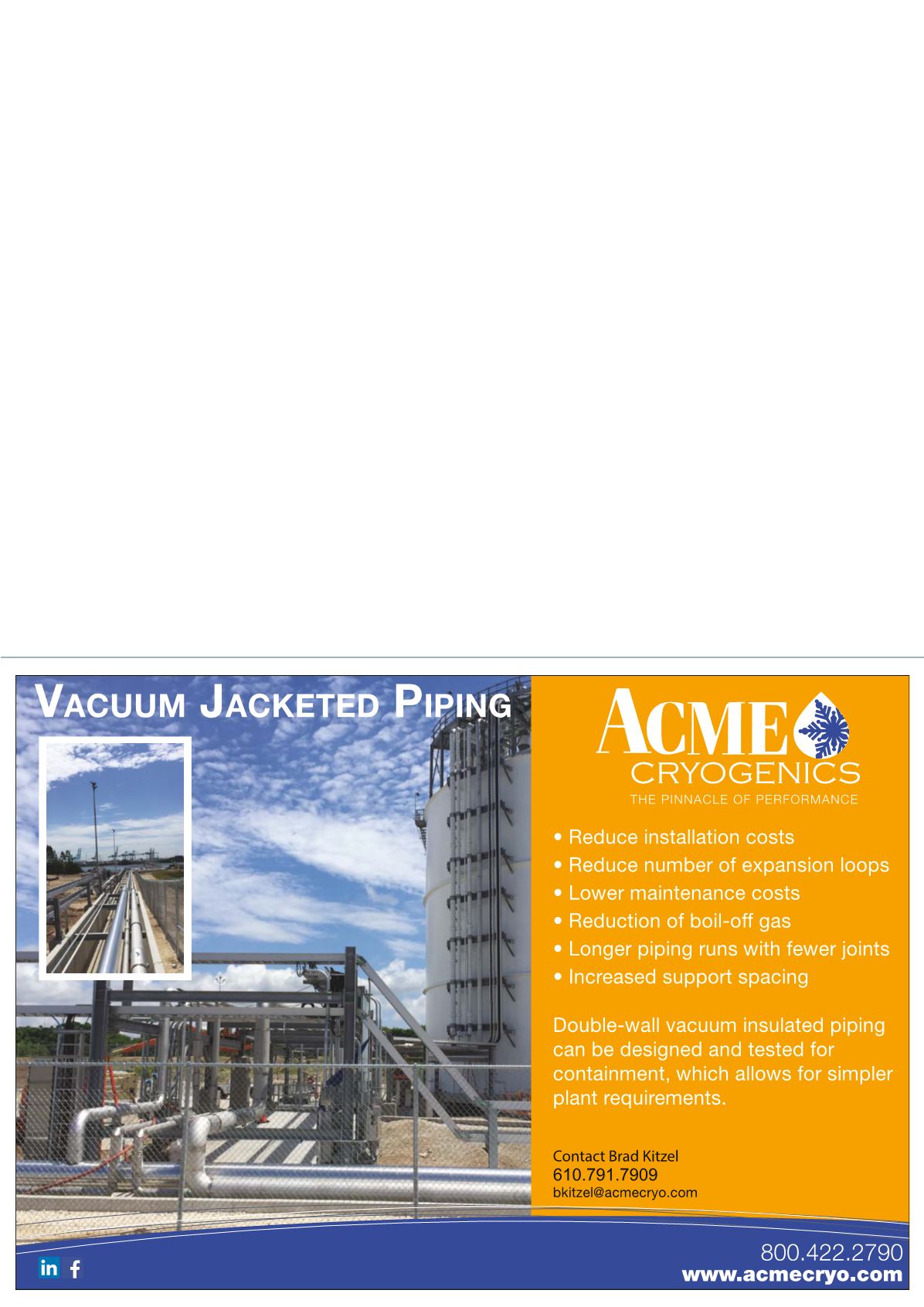
January 2020
39
To compare GHG emission enhancements, a case scenario
is simulated with the LNG production based on the available
aeroderivative power of 118 MW. The resultant configuration
is determined to be a single 3.5 million tpy liquefaction train
driven by three aeroderivative gas turbines, 30 MW of
auxiliary power and a calculated total plant GHG emissions
of 0.23 tCO
2
e/tLNG.
High efficiency
With this base case scenario exceeding the GHG
emissions target of 0.16 tCO
2
e/tLNG, it is clear that
further optimisation is necessary. Targeting high efficiency
enhancements through additional CAPEX investment can
improve plant performance, GHG emissions and economics.
Improvements in GHG emissions and economics are achieved
by raising LNG production through cost benefit analysis
to drive down the dollars per tonne LNG ratio. These
efficiency improvements ensure the rise in LNG production
does not proportionally increase power consumption and
therefore GHG emissions. These enhancements include
the introduction of expanders, inlet gas turbine chilling,
innovative heat integration, efficient heavy hydrocarbon
removal, feed gas compression, and minimising pressure
drops. Observing factors such as a rise in LNG production
of 0.7% per bar and 1.5% by introducing an expander, a
step change in LNG production is realised for the same
refrigerant compressor configuration and duty. Operating
the liquefaction unit at 85 barg through 15 MW of feed gas
compression, utilising LNG and MR expanders, adopting
TEX technology for heavy hydrocarbon removal, optimising
heat integration and reducing equipment pressure drops,
means that the overall LNG production increases to
4.1 million tpy with an associated fall in GHG emissions to
0.21 tCO
2
e/tLNG. Although this represents a significant GHG
emissions improvement, it is clear that efficiency enhancing
technologies alone are not enough to meet the GHG
emission target, and therefore additional steps are necessary
to achieve further reductions.
For this case study, the assumed feed gas composition
represents pipeline quality gas with a low CO
2
content and
so has a minor impact on overall GHG emissions. Projects
with higher CO
2
content, will have a greater impact on GHG
emissions. Therefore, the recovered CO
2
from feed gas should
be considered for reinjection, enhanced oil recovery (EOR),
saleable product or underground storage. If these are not
viable options, then the project’s GHG emissions would be
considerably higher compared to the case study, resulting in
greater GHG reduction measures being necessary, such as a
higher level of electrification. For this case study, the
majority of the GHG emissions originate from the refrigerant
compressor gas turbines and the auxiliary power plant gas
turbines, so it is these sources which form the target for
further GHG emission reduction over and above the high
efficiency enhancements.
Carbon capture
When targeting GHG emissions from the gas turbines,
post-combustion carbon capture on flue gas is a viable
method. Utilising Aker Solutions’ Just Catch™ carbon capture
technology on the refrigerant compressor drivers’ exhaust








